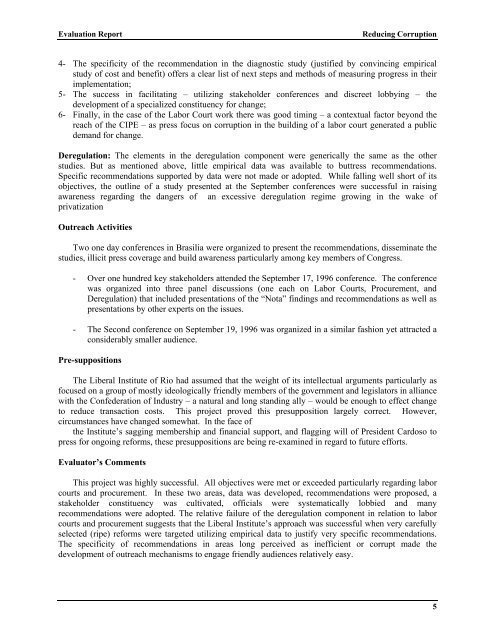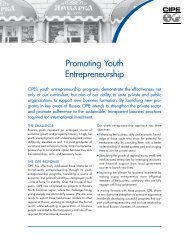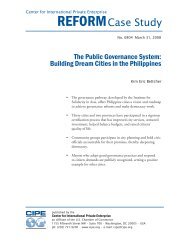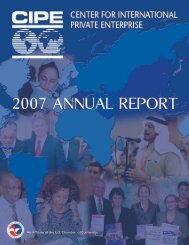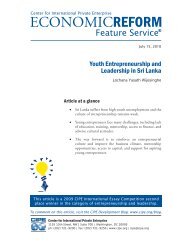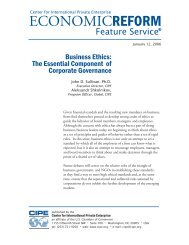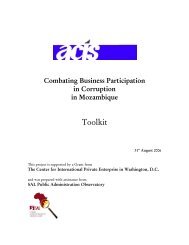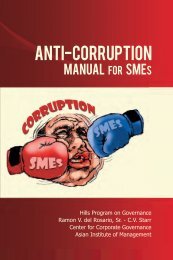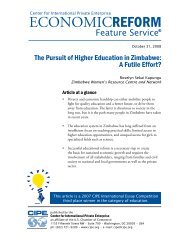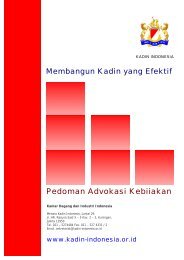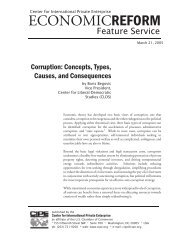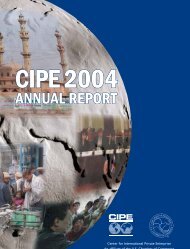REDUCING CORRUPTION A Report on Two Anti-Corruption Projects
REDUCING CORRUPTION A Report on Two Anti-Corruption Projects
REDUCING CORRUPTION A Report on Two Anti-Corruption Projects
Create successful ePaper yourself
Turn your PDF publications into a flip-book with our unique Google optimized e-Paper software.
Evaluati<strong>on</strong> <str<strong>on</strong>g>Report</str<strong>on</strong>g>Reducing Corrupti<strong>on</strong>4- The specificity of the recommendati<strong>on</strong> in the diagnostic study (justified by c<strong>on</strong>vincing empiricalstudy of cost and benefit) offers a clear list of next steps and methods of measuring progress in theirimplementati<strong>on</strong>;5- The success in facilitating – utilizing stakeholder c<strong>on</strong>ferences and discreet lobbying – thedevelopment of a specialized c<strong>on</strong>stituency for change;6- Finally, in the case of the Labor Court work there was good timing – a c<strong>on</strong>textual factor bey<strong>on</strong>d thereach of the CIPE – as press focus <strong>on</strong> corrupti<strong>on</strong> in the building of a labor court generated a publicdemand for change.Deregulati<strong>on</strong>: The elements in the deregulati<strong>on</strong> comp<strong>on</strong>ent were generically the same as the otherstudies. But as menti<strong>on</strong>ed above, little empirical data was available to buttress recommendati<strong>on</strong>s.Specific recommendati<strong>on</strong>s supported by data were not made or adopted. While falling well short of itsobjectives, the outline of a study presented at the September c<strong>on</strong>ferences were successful in raisingawareness regarding the dangers of an excessive deregulati<strong>on</strong> regime growing in the wake ofprivatizati<strong>on</strong>Outreach Activities<strong>Two</strong> <strong>on</strong>e day c<strong>on</strong>ferences in Brasilia were organized to present the recommendati<strong>on</strong>s, disseminate thestudies, illicit press coverage and build awareness particularly am<strong>on</strong>g key members of C<strong>on</strong>gress.- Over <strong>on</strong>e hundred key stakeholders attended the September 17, 1996 c<strong>on</strong>ference. The c<strong>on</strong>ferencewas organized into three panel discussi<strong>on</strong>s (<strong>on</strong>e each <strong>on</strong> Labor Courts, Procurement, andDeregulati<strong>on</strong>) that included presentati<strong>on</strong>s of the “Nota” findings and recommendati<strong>on</strong>s as well aspresentati<strong>on</strong>s by other experts <strong>on</strong> the issues.- The Sec<strong>on</strong>d c<strong>on</strong>ference <strong>on</strong> September 19, 1996 was organized in a similar fashi<strong>on</strong> yet attracted ac<strong>on</strong>siderably smaller audience.Pre-suppositi<strong>on</strong>sThe Liberal Institute of Rio had assumed that the weight of its intellectual arguments particularly asfocused <strong>on</strong> a group of mostly ideologically friendly members of the government and legislators in alliancewith the C<strong>on</strong>federati<strong>on</strong> of Industry – a natural and l<strong>on</strong>g standing ally – would be enough to effect changeto reduce transacti<strong>on</strong> costs. This project proved this presuppositi<strong>on</strong> largely correct. However,circumstances have changed somewhat. In the face ofthe Institute’s sagging membership and financial support, and flagging will of President Cardoso topress for <strong>on</strong>going reforms, these presuppositi<strong>on</strong>s are being re-examined in regard to future efforts.Evaluator’s CommentsThis project was highly successful. All objectives were met or exceeded particularly regarding laborcourts and procurement. In these two areas, data was developed, recommendati<strong>on</strong>s were proposed, astakeholder c<strong>on</strong>stituency was cultivated, officials were systematically lobbied and manyrecommendati<strong>on</strong>s were adopted. The relative failure of the deregulati<strong>on</strong> comp<strong>on</strong>ent in relati<strong>on</strong> to laborcourts and procurement suggests that the Liberal Institute’s approach was successful when very carefullyselected (ripe) reforms were targeted utilizing empirical data to justify very specific recommendati<strong>on</strong>s.The specificity of recommendati<strong>on</strong>s in areas l<strong>on</strong>g perceived as inefficient or corrupt made thedevelopment of outreach mechanisms to engage friendly audiences relatively easy.5


